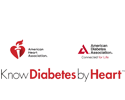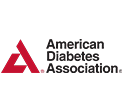Speaking With: Neil Smiley on the Advantages of Narrow Healthcare Networks
Editor’s Note: Narrow healthcare networks have evolved as health insurance companies attempt to control costs and manage care. Even though these systems limit participants’ choice of doctors and hospitals, they are serving to better align services with patient needs. Neil Smiley, CEO, Loopback Analytics shares his thoughts on why the number of narrow healthcare networks continues to increase.
RealWorldHealthCare: What is unique about these narrow healthcare networks that have increased over the past couple of years? What advantages do they bring to the healthcare landscape?
Neil Smiley: Healthcare reimbursement models are changing. The traditional fee-for-service model incentivizes providers along the care continuum to maximize utilization of their services, not improve clinical outcomes or reduce total cost of care. However, over the past couple of years, readmission penalties, bundled payments and ACOs are moving providers to collaborate with care partners across the continuum to ensure patient transitions are successful and the providers they refer their patients to are delivering high quality, cost effective care. Narrow networks of highly collaborative, quality providers can improve care coordination, reduce fumbled handoffs and better align services with patient needs.
RWHC: How are these narrow networks being optimized to improve access to care and reduce the cost of care?
NS: You have to have good data to assemble and optimize a narrow network. Narrow networks require high levels of collaboration between care partners. Narrow network participants have to come together on standard quality and outcome measures, and create an effective feedback loop to target areas for improvement.
RWHC: The cost of hospital re-admissions is an increasing concern. What can be done to reduce hospital readmissions?
NS: There is no silver bullet. There is a diverse set of reasons why patients readmit to the hospital. Consequently, readmission reduction programs must be multifaceted. A “one-size fits all” approach is prohibitively expensive and probably ineffective. Data analytics can rank patients by risk of readmission and match them to right interventions at the right time to mitigate patient-specific risk factors that would otherwise lead to hospital readmissions.
RWHC: What is the “sweet spot” for big data analytics in terms of improving positive patient outcomes? Can you provide a real-world example of how data capture and analytics has improved patient outcomes?
NS: Big data analysis of real-time data can be used to proactively identify patients that are most vulnerable to having a bad outcome. Data patterns can also flag patients that are likely (or unlikely) to benefit from a specific interventions. For example, medication adherence problems are a major cause of hospital readmissions. Big data can be used to analyze the history of prescription fill patterns, the number and complexity of medications and available clinical markers to proactively identify patients for pharmacist consultations.
RWHC: How is the role of community based organizations changing in terms of improving access to care, reducing the cost of care, providing for more patient-centered care, and generally improving patient outcomes?
NS: There is growing recognition that the root cause of what ultimately results in a hospitalization may begin with some simple unmet need out in the community. Patients may lack transportation to the doctor or need help in translating their care instructions in a language they understand. There may be fall risks in their home or old prescriptions that should be thrown out to avoid a medication error. Community-based organizations can engage patients in their home and address risk factors that would otherwise go undetected. Hospital systems and payers are adding community-based organizations to their existing clinical interventions to provide more holistic, cost-effective, patient-centered care.
What advantages do you think narrow healthcare networks have? What about disadvantages? Let us know in the comments section.


















